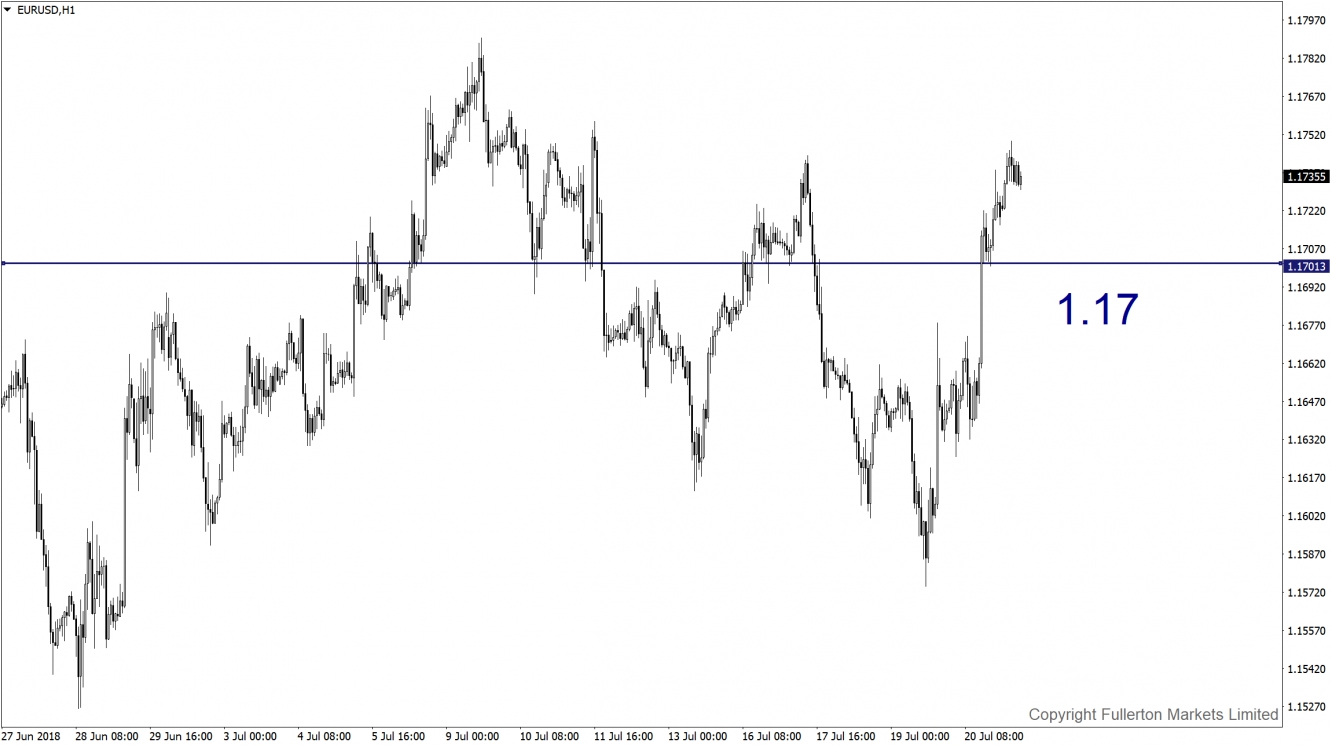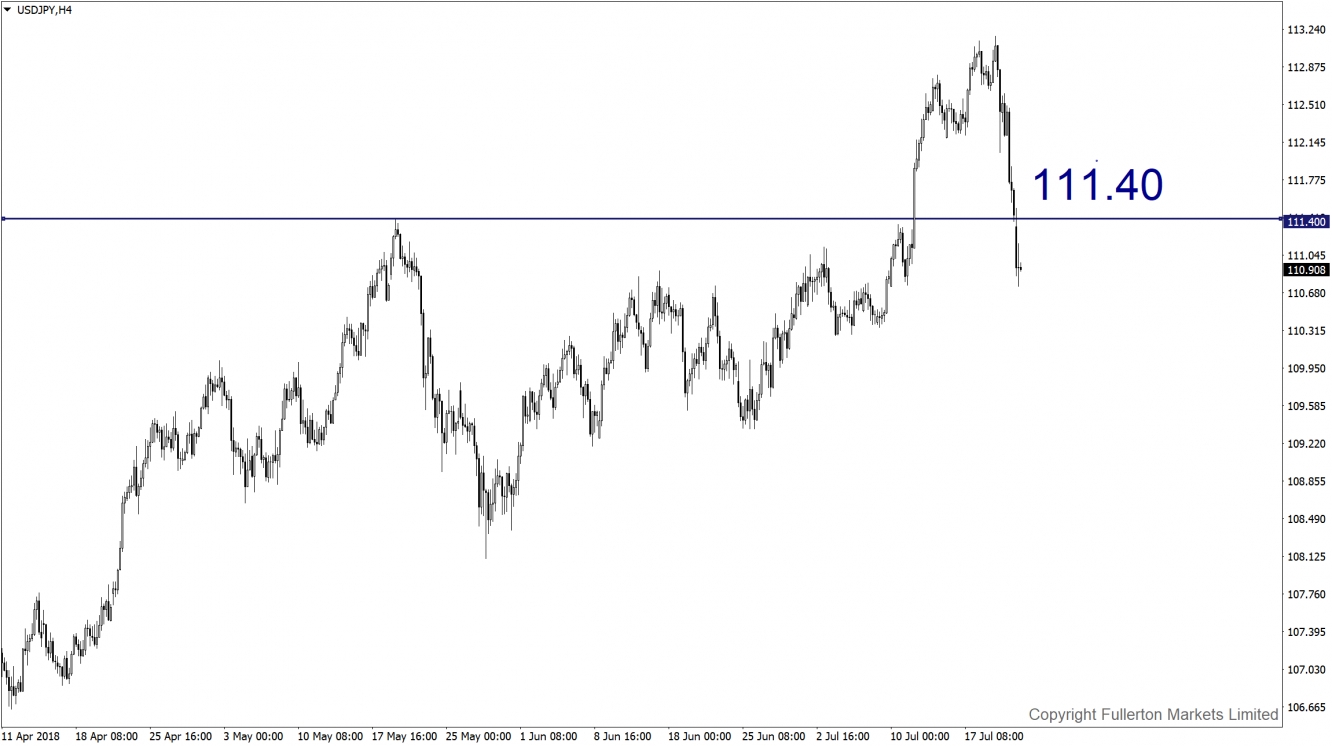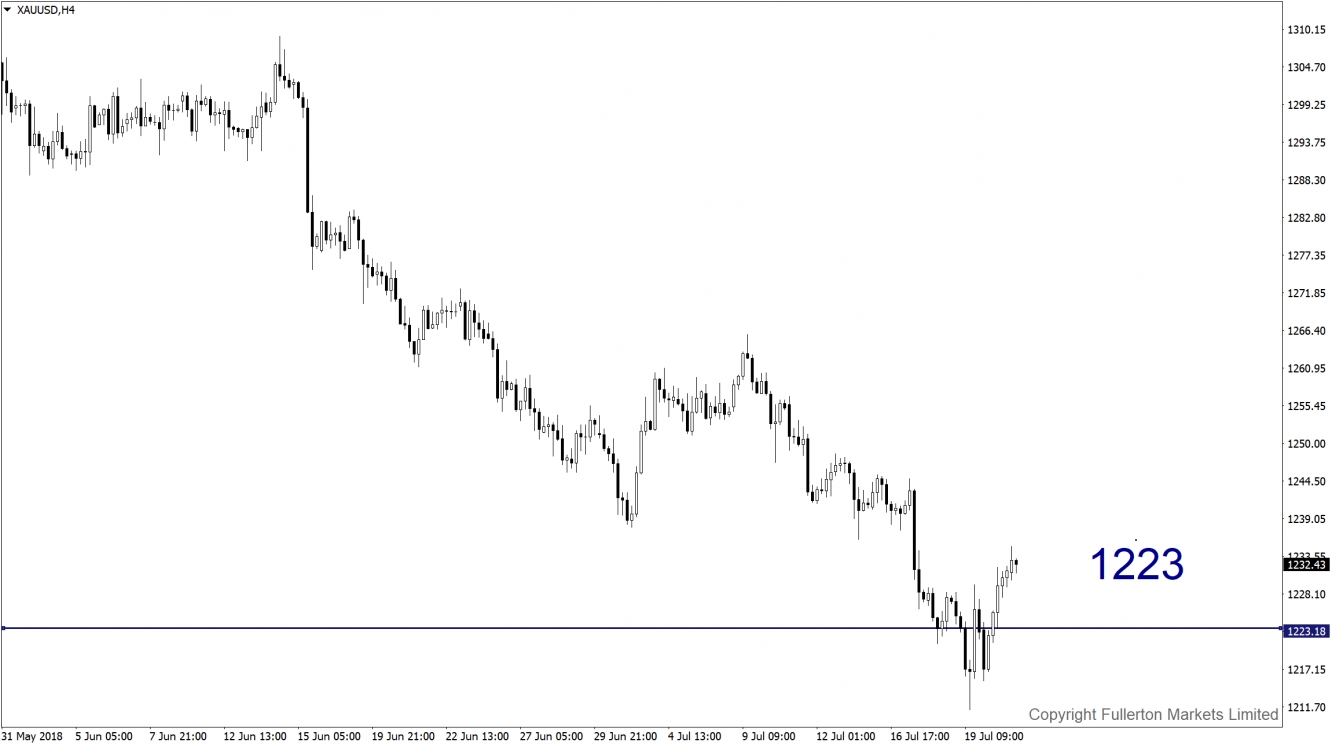Yuan may continue to fall and drive other currencies lower, short EUR/USD?
Three reasons why yuan’s weakness may stay in upcoming months
Chinese currency is standing on the centre stage again, and its correlation with other global assets are seen largely increasing in recent months. This attracts more market participants’ attentions to gauge yuan’s upcoming direction. Through our analysis, we illustrate three fundamentals factors that are staying behind the recent yuan’s weakness and are likely to persist in coming months.
1) Macroeconomic data shows Chinese growth momentum fading in the past few months, while it remains resilient in the US
Manufacturing activities in China are deteriorating according to the recent high frequency data. China industrial output, largely taken as its GDP proxy, has been decelerating for past two months, falling to 6.0% y/y in June. It was one of the slowest expansions for past 2.5 years. Its official manufacturing new export orders PMI fell to 49.8 last month, well below the key threshold of 50.0 level. Consumer spending in China is also seen moderating this year, with a monthly average growth of 9.4% since the beginning of 2018. This is well below the average growth of 11.1% for the past five years.
In our opinion, slow monetary supply and limited credit access are two key factors causing the current soft growth momentum. Our calculation shows that credit through social financing channel declined by 698-billion-yuan last month, which could be the largest monthly decline in history. Many firms in the private sectors are still unable to access the credit amid the ongoing deleveraging campaign. There is no sign that credit activities have been improving as the monthly money supply M2 growth rate continues to search for new lows. We expect the downward pressures on economic growth to remain before the recovery in M2 money supply rate.
On the other hand, ISM manufacturing PMI is approaching the highest level since 2004, and its service PMI is near its historical peak. Conference board consumer confidence index is also near the highest level since the beginning of the 21st Century. All these data indicate that the largest economic growth remain upbeat amid bountiful jobs and lower taxes, even with as China’s monetary policy still in a tightening cycle.
2) Fed and PBOC’s monetary policy outlooks are the key drivers behind the USD/CNY exchange rates
When referring to yuan’s depreciation in 2014-2016 period, everyone recognized the main force behind the rally in USD/CNY which is the policy divergence between the Fed and PBOC. Chinese central bank conducted various broad-based monetary easing tools including benchmark lending rate and RRR cuts in this period. Fed, on the other hand, was raising its interest rates. Great monetary divergence between the two spurred a 15% surge in USD/CNY from 2014-2016.
Moving into 2018, PBOC shows more signs of its willingness to lose the monetary policy as Fed continues to raise its interest rates by two time in first half. The Chinese central bank has cut reserve-requirement ratios three times this year, pumping in more liquidity into the banking system to support the private sectors. Since the speed of monetary expansion may continue to be under pressure due to the tepid M2 growth, market widely expects PBOC to ease further in the second half of the year. Moreover, PBOC did not follow Fed to raise its reverse-repo rates after the latest Fed’s rate hike in June which signals that its monetary policy could be more growth-oriented in coming months.
Fed’s policy is still on a path of gradually raising rates as its labour market is coming close to full employment. Fed’s preferred inflation gauge – core PCE has reached 1.9% in May, only 0.1% below its 2.0% inflation target. Though there are greater concerns whether the Fed will respond to a flatter yield curves by slowing the tightening pace, Powell delivered a clear message last week that there's no plan to change the ongoing balance sheet reduction program in response to a flatter curve.
3) China-US sovereign bond yield spread explains the increasing yuan depreciation pressure
The spread between China-US 10-year government bonds narrows to 62 bps at this moment, from 171 bps eight months ago. The current spread is close to those days in December 2015 and November 2016 whereby yuan depreciation pressure intensified. In most of the markets, interest rates’ differential is one of key factors that is driving the exchange rates. China-US 10-year bond yield spread widened by 70 bps in 2017, with Chinese yuan appreciating 6.7% versus dollar in this period.
Looking ahead, the scope for bond yield curve spread between the two largest economies to continue to narrow remains. Even with the escalation in trade tensions in recent months, we did not see much flows into US Treasuries. Instead, its curve pays more attention to Fed’s policy when the central bank is expected to raise the interest rate at least once in the next five months. In China bonds market, its 10-year sovereign note now dropped to 3.52% after PBOC shows more willingness to provide more liquidities. If the 3.50% level is penetrated, the 10-year bond yield may further decline towards 3.25%.
Our Picks
EUR/USD – Slightly bearish.
This pair may drop towards 1.17 this week as Trump’s effort to talk dollar lower is seen to have limited impact.
USD/JPY – Slightly bullish.
We expect this pair to rise towards 111.40 this week.
XAU/USD (Gold) – Slightly bearish.
We expect price to fall towards 1223 this week.



